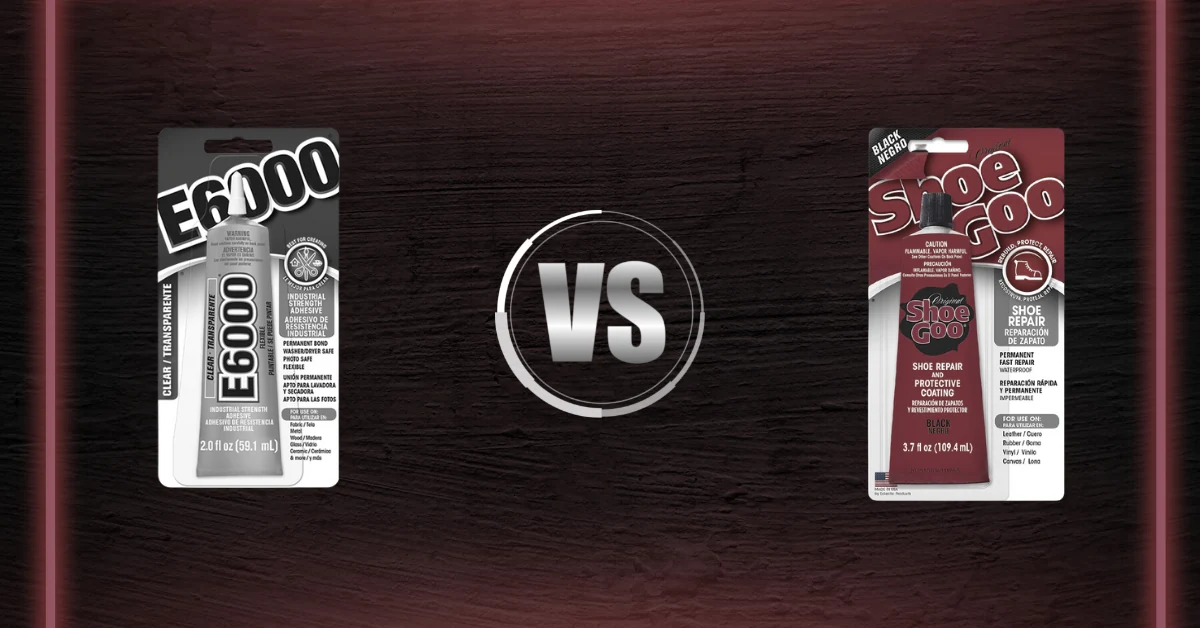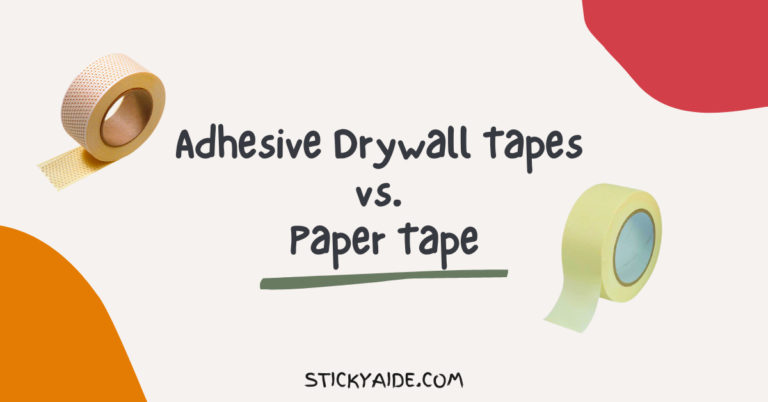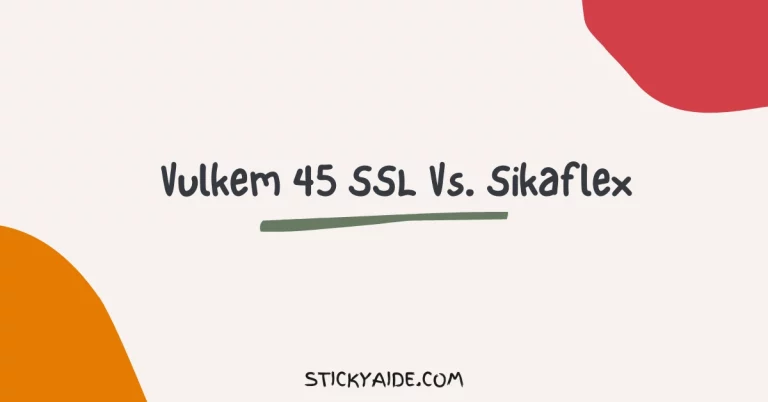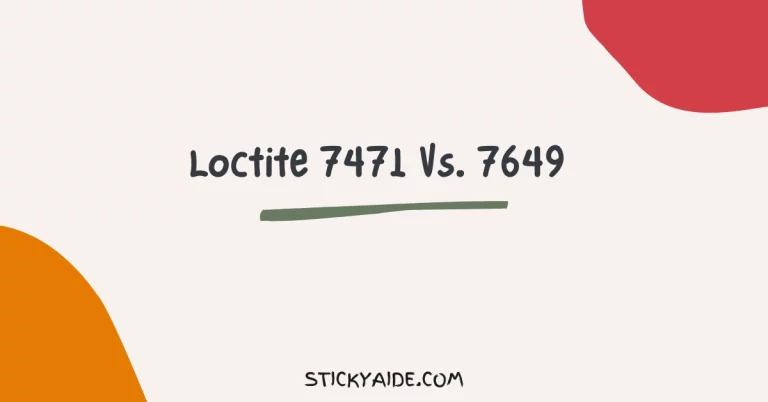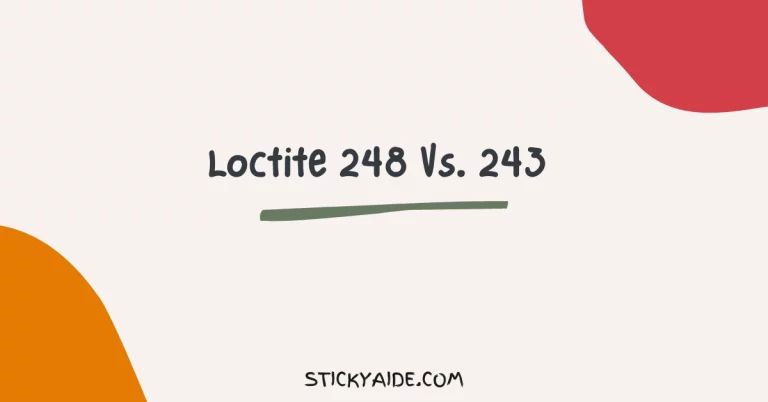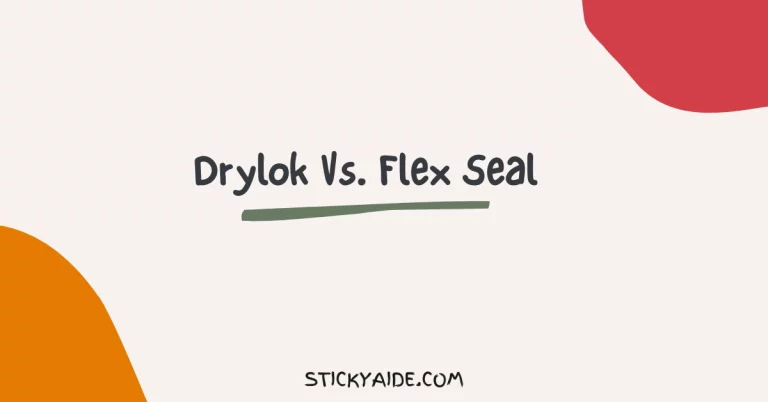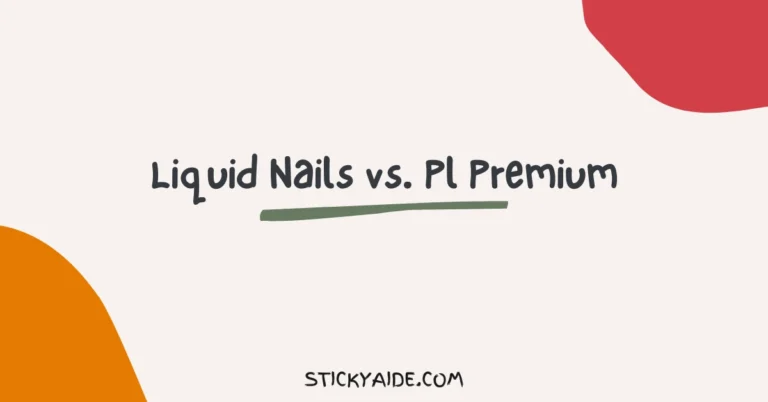You might have a favorite pair of boots that you have been using for some time, and over time if it has worn out or the heel is falling off, you’re probably looking for ways to repair it.
A proper glue suitable for your purpose is a major component of fixing a shoe.
Shoe Goo and e6000 are two of the most popular and readily available options you can go for.
If you’re stuck between what to choose between e6000 vs. Shoe Goo, I have got you covered. I’ll look into each of these glues’ features, which materials they are most suited for, and which would be the better option for you.
Read More: Loctite Shoe Glue vs. Shoe Goo
E6000 vs. Shoe Goo Adhesive
Overview of E6000
The e6000 is a high-performance, industrial glue made by Eclectic Products Inc. Since e6000 is meant for industrial usage, this glue offers superior bonding capabilities. However, it has also become a standard household product, and you can use the e6000 to repair your old shoes.
The e6000 is a versatile, strong glue composed of high-grade polyurethane and is suitable for various materials. Furthermore, the adhesive is also resistant to extreme/harsh weather conditions and multiple exterior forces.
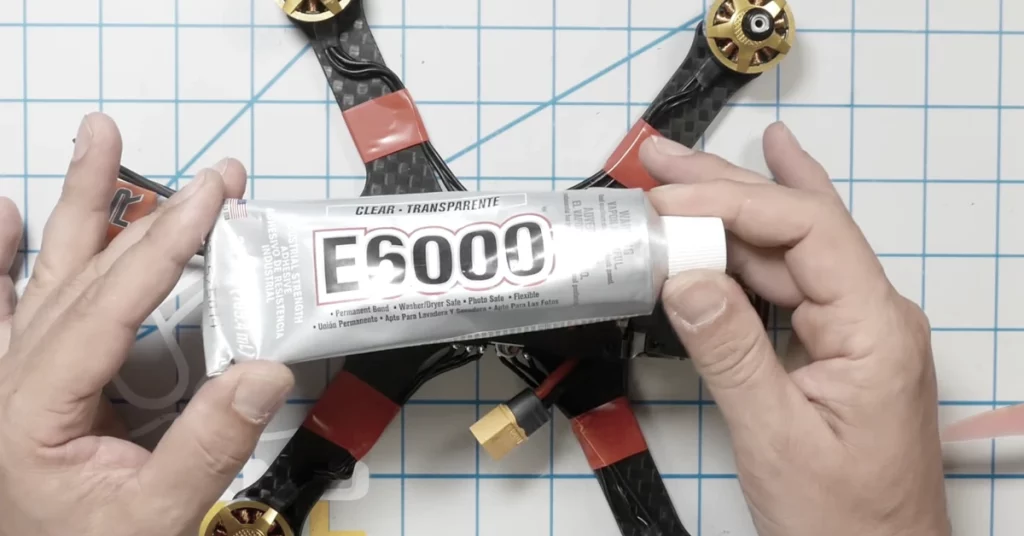
E6000 is suitable to use with Metal, Wood, Ceramic, Fabric, Rubber, Vinyl, Glass, and Plastic and would not work well with Styrofoam, Polystyrene, Polyethylene, or Polypropylene.
When it comes to repairing your shoes, it also goes well with various kinds of boots or shoes you have. If you have rubber, leather, or vinyl plastic shoes, you can go with the e6000 since it will bond them well.
The e6000 is not water-soluble, so if you plan to use your shoes in wet conditions, the e6000 would be a good fit. Furthermore, it’s also resistant to UV radiation and extreme heat.
Since it’s also resistant to moisture, abrasion, or impact, it’s ideal for use in extreme weather conditions or by working professionals.
Since the e6000 is an industrial glue, it is known for its solid bonding capabilities. The e6000 has a tensile strength of 3200 psi, and once the bond is adequately set, it has a shore hardness of 80.
Furthermore, the e6000 comes in black, white, and clear finishes, making it ideal for use with various colors and finishes of your shoes.
The E6000 also ships in various sizes, starting from a tube of 0.18 fl oz to 10.2 fl oz sized tubes. It also comes in larger sizes of 1 Gallon, 5 Gallon, or a drum.
Read More: Shoe Goo vs. Contact Cement
Overview of Shoe Goo
Shoe Goo is also an adhesive made for repairing shoes by Eclectic Products. Shoe Goo is one of the common names you’ll encounter while looking for glues to improve your shoes. Shoe Goo is one of the most versatile, widely available, and relatively cheap glues you can find to fix your shoes.
Shoe Goo is also a suitable sealant; besides being a good adhesive, you can use it to fill and repair small holes in your shoes or boots. Shoe Goo is composed of Styrene-butadiene, Toluene, and Solvent naphtha, which helps it to be a superior sealant and adhesive.
Shoe Goo works well with various materials like vinyl, leather, rubber, and canvas. Furthermore, you can also use Shoe Goo to coat your shoe to prevent wearing it early. Shoe Goo is also completely waterproof so you can use it on shoes you plan to use in wet conditions.
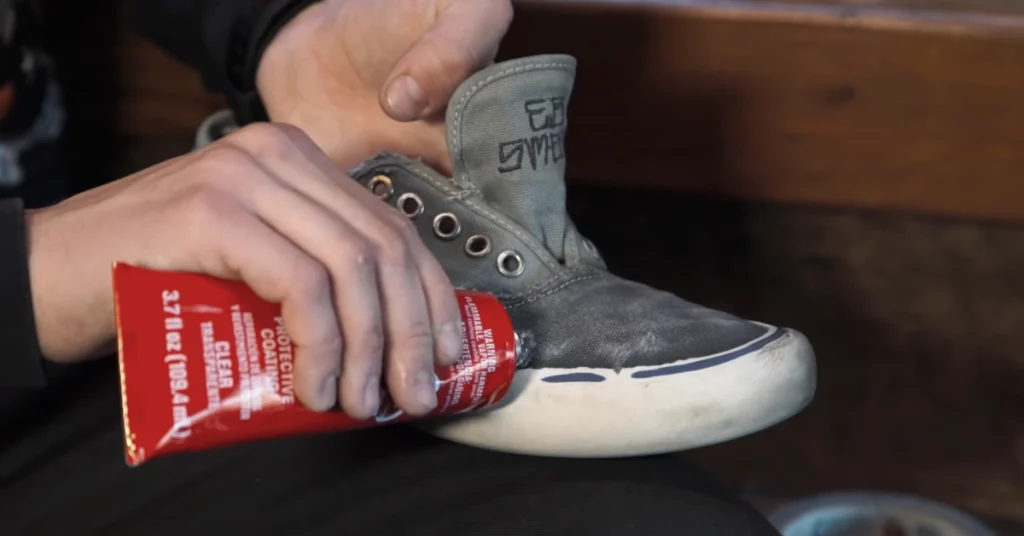
Shoe Goo can be used on more or less every component of your shoes, including the heels or waders. You can also use coats of Shoe Goo on the tip of the shoe to strengthen the tip and make it last longer.
Shoe Goo is abrasion resistant, and once cured, it does not become hard like many other types of glue or brittle like super glue. The composition of Shoe Goo makes it flexible and bendable once cured, so it’s great to use for sports and outdoor activities.
Shoe Goo comes only in clear color and is offered in different sizes of tubes – 0.18 fl oz, one fl oz, and three fl oz.
Read More: Shoe Goo vs. Rubber Cement
E6000 and Shoe Goo Differences
Now that I have looked into the properties and features of the e6000 and shoe goo, let’s look at their differences, so you can decide which one to go for.
Appropriate Materials to Use On
The E6000 works well with various materials like – Metal, Wood, Ceramic, Fabric, Rubber, Vinyl, Glass, and Plastic. It will work excellently with shoes made of rubber, leather, or vinyl plastic,
Shoe Goo is also excellent for repairing shoes made with various materials. Shoe Goo works well with Leather, Vinyl, Rubber, or Canvas.
Drying Time
Both of the glues have similar drying and cure time. The E6000 starts to bond the materials together within 2 minutes and will begin to set in about 10 minutes from then. After that, you’ll need to leave your shoes undisturbed for a day or two since a complete cure needs 24 to 48 hours.
On the other hand, Shoe Goo also starts to dry within minutes after applying. Similar to the e6000, you’ll need to leave your shoes undisturbed for a day or two for the glue to cure completely. Shoe Goo needs 24 to 48 hours for a complete cure.
Glue Strength
The E6000 is an industrial glue meant to withstand extreme weather and heat conditions. The Glue has a tensile strength of 3200 psi and shore hardness of 80 once fully cured. Furthermore, it is resistant to UV radiation, extreme heat, moisture, and abrasion.
On the other hand, Shoe Goo is water-resistant but weaker compared to the e6000. It can be an ideal choice for everyday or casual sports but could be better to use in extreme weather conditions or by working professionals.
Glue Finishes and Sizes
The E6000 comes in black, white, and clear finishes. The size of the tubes ranges from 0.18 fl oz to 10.2 fl oz and one or 5-gallon drums.
Shoe Goo comes in a clear finish, and sizes of tubes are – 0.18 fl oz, one fl oz, and three fl oz.
Read More: Gorilla Glue vs. Shoe Goo
Can E6000 glue be used on shoes?
Yes, E6000 glue can be used on shoes. E6000 is a versatile and strong adhesive that is often used for various shoe repair and crafting purposes.
It can bond a wide range of materials commonly found in shoes, such as leather, rubber, fabric, and plastic.
Whether you’re repairing a sole, reattaching a sole to the upper part of the shoe, or embellishing your shoes with decorations, E6000 glue can provide a durable and long-lasting bond when used as directed.
Just ensure that you follow the manufacturer’s instructions for surface preparation, application, and drying times for the best results.
Last Opinion
Now that we’ve addressed the debate of e6000 vs. Shoe Goo, which option is better for you? It depends on you since both of these glues are well recommended, excellent adhesives offering great functionality.
If you plan to use your shoes for casual sports or everyday use and are looking for a cheaper repair option, you can go for Shoe Goo.
If you plan to apply glue coatings to protect your shoes from damage early on, you can also go for Shoe Goo.
On the other hand, if you are a working professional and plan to use your shoes or boots in extreme weather conditions and have a risk of high UV exposure or will be working in extreme heat conditions, you can go for the e6000.
The e6000 also comes in black and white finishes besides the clear finish, so if you’re looking for a specific color, the e6000 is also a better choice.

